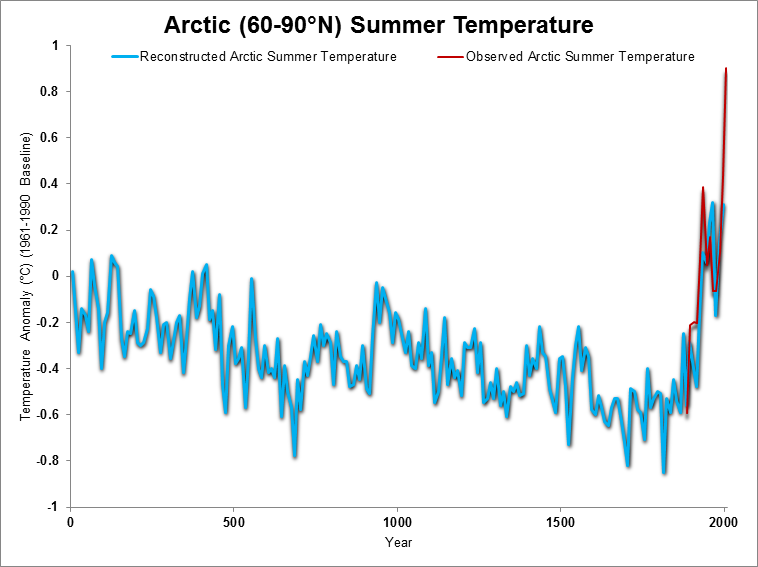
Figure 1: Arctic temperature change reconstructed by Kaufmann et al. (2009) including data updated for corrigendum and including instrumental measurements for the Arctic region (60 to 90° N) from NASA.
What The Science Says:
While there have been times in the distant past when Arctic sea ice extent was lower than today's, the current sea ice extent is the lowest in the past several thousand years.
Climate Myth: Arctic sea ice extent was lower in the past
"...there [is] anecdotal and other evidence suggesting similar melts from 1938-43 and on other occasions." (John Christy via Jonathan Leake)
It's important to note that we expect the Arctic to have been cooling over the past ~6,000 years due to the Earth's orbital cycles. Thus if we look back far enough in the past, we can certainly find a period during which the Arctic was hotter and Arctic sea ice extent was lower. However, this actually contradicts the argument that the current sea ice decline could be natural, because that long-term orbital forcing has not reversed, and thus cannot account for the sudden and rapid Arctic warming and concurrent sea ice decline.
Kaufman et al. (2009) reconstructed past Arctic temperatures, and confirmed that the Arctic had been cooling for at least the past 2,000 years prior to the 20th Century, and found an Arctic temperature 'hockey stick' (Figure 1).
Figure 1: Arctic temperature change reconstructed by Kaufmann et al. (2009) including data updated for corrigendum and including instrumental measurements for the Arctic region (60 to 90° N) from NASA.
Perhaps the authoritative paper on Arctic sea ice extent over the past 1,450 years is Kinnard et al. (2011), which used a combination of Arctic ice core, tree ring, and lake sediment data to reconstruct past Arctic conditions. The results are shown in Figure 2.
Figure 2: Arctic sea ice extent over the past 1,450 years reconstructed from proxy data by Kinnard et al., with a 40-year low pass filter applied. Note that the modern observational data in this figure extend through 2008, and thus it is a close approximation of current conditions, even though the extent is not as low as current annual data due to the 40-year smoothing.
Based on the Kinnard results, Arctic sea ice extent is currently lower than at any time in the past 1,450 years.
Polyak et al. (2010) looked at Arctic sea ice changes throughout geologic history and noted that the current rate of loss appears to be more rapid than natural variability can account for in the historical record.
"The current reduction in Arctic ice cover started in the late 19th century, consistent with the rapidly warming climate, and became very pronounced over the last three decades. This ice loss appears to be unmatched over at least the last few thousand years and unexplainable by any of the known natural variabilities."
 |
The Skeptical Science website by Skeptical Science is licensed under a Creative Commons Attribution 3.0 Unported License. |